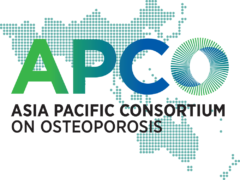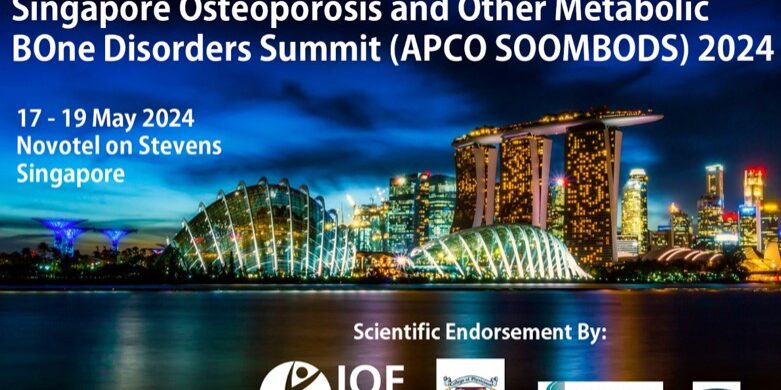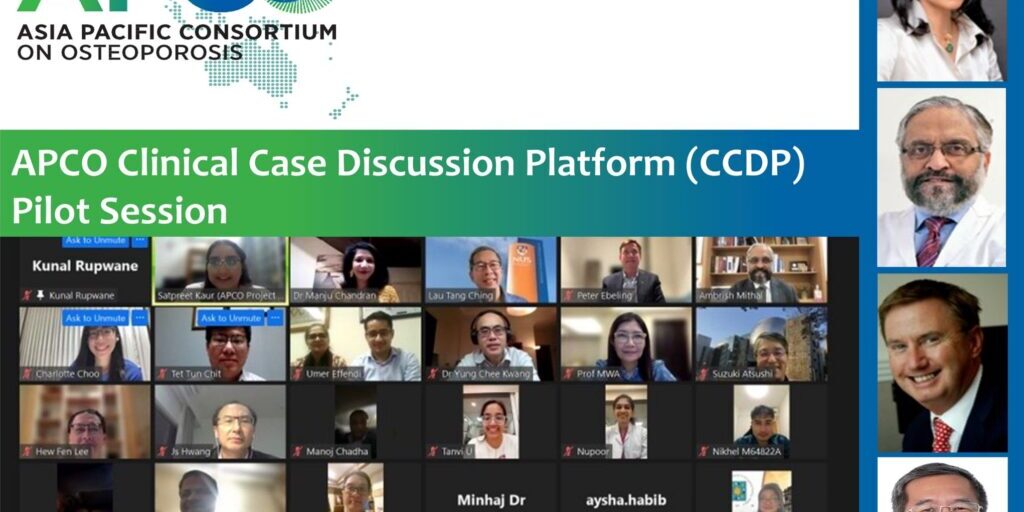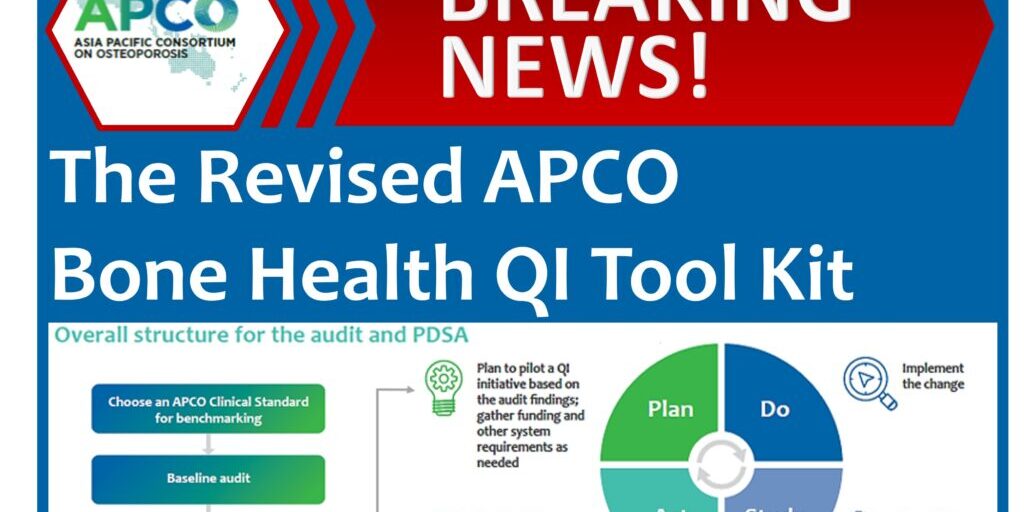APCO Chairperson and Director of the Osteoporosis and Bone Metabolism Unit, Singapore General Hospital, Dr Manju Chandran, Singapore, was recently welcomed back as a special guest on Channel News Asia’s ‘Health Matters’ radio program by host, Daniel Martin, on May 31, 2022.
During her interview, Dr Chandran reflected on the May 24, 2022 launch of the APCO Bone Health QI Tool Kit that encompasses multiple components in the screening, diagnosis, and management of osteoporosis. The Tool Kit aims to promote multi-sector healthcare professional engagement and cooperation, to help stem the current osteoporosis crisis in the Asia Pacific.
“By the year 2050, half of the world’s osteoporotic fractures will occur in Asia,” said Dr Chandran.
Concerningly, currently one-in-four patients who sustain a hip fracture, die within a year, and less than half of those who survive, regain their previous level of function.
“A world-first of its kind, the APCO Bone Health QI Tool Kit aims to address the major public health burden of osteoporosis throughout the Asia Pacific region through the promotion of quality improvement (QI) of osteoporosis care,” Dr Chandran said.
“Prior to the launch of our APCO Bone Health QI Tool Kit we did not have any tool kits in the world to date, covering so many aspects of osteoporosis care, right from screening to diagnosis, to assessment and management,” Dr Chandran said.
According to Dr Chandran, the unique framework of the Tool Kit serves to address the fragmented standards of care throughout the Asia Pacific region.
“It’s interesting that something like this did not exist. The guidelines are out there, but what guarantee do you have that those standards of care advocated, and all these guidelines are going to be implemented in clinical practice? And what guarantee is there that these standards of care are being followed?
“In 2021, we developed a pan-Asia Oceania minimum standards of care for the screening, diagnosis and management of osteoporosis because we felt there was a complete lack of harmony between existing osteoporosis guidelines in the Asia Pacific region,” said Dr Chandran.
“The development of the Framework was an attempt to harmonise the guidelines, make it easier for the healthcare provider who is grappling with this big problem of osteoporosis, to deal with it, and its various facets and manifestations.”
Dr Chandran further explained that the unique QI Tool Kit was built around seven of the standards of the Framework that could be directly applied to clinical practice. She described how the QI Tool Kit Audit helps to understand how to improve quality of care; what protocols should be put in place; and how healthcare facilities and practitioners can make that change.
“The APCO Tool Kit focuses on investigating the patient pathway, and helping the healthcare provider to identify the gaps or missed opportunities for each patient.
“It’s primarily meant for healthcare providers dealing with osteoporosis, because every patient with osteoporosis and/or a fragility fracture, passes through a number of points in their journey from diagnosis, through to treatment, and to follow up,” Dr Chandran said.
“There can be many gaps in this process, as the person progresses from screening and diagnosis, all the way to management, and follow up.”
The QI Tool Kit provides clear instructions on how not only to conduct the audit in the first place, but subsequently, how to implement a QI project using the PDSA cycles.
The PDSA cycles are iterative. Each cycle involves four stages:
- Plan – developing a plan to test the change;
- Do – carrying out the test;
- Study – observing and learning; and
- Act – planning the next change cycle or full implementation.
This entire process can help streamline and benchmark certain elements for HCPs in the phases of treatment, prevention, management, and follow-up of osteoporotic fractures.
“The beauty of this Tool Kit is that it can be utilised by healthcare providers anywhere in the world, to audit their own practice, and to see whether, and how, it benchmarks against the gold standards of care, which are advocated in the APCO Framework.
“What we hope to do, is to help block what we call an ‘osteoporotic fracture cascade’, which means that we aim to prevent a fracture from happening, even before the first fracture occurs,” said Dr Chandran.
From a patient perspective, Dr Chandran explained that while these changes will appear “seamless” to the patient, their treatment prospects will nonetheless, be undergoing significant improvement.
“Ultimately, the patient shouldn’t realise that there’s so much furious activity going on backstage. To him or her, he, or she, it’s about the best possible care. That’s all.”
To hear Dr Chandran’s full interview, or to read the corresponding radio transcript, head here.
To learn more about the APCO Bone Health QI Tool Kit, visit www.apcobonehealth.org or follow APCO on LinkedIn: asia-pacific-consortium-on-osteoporosis.






